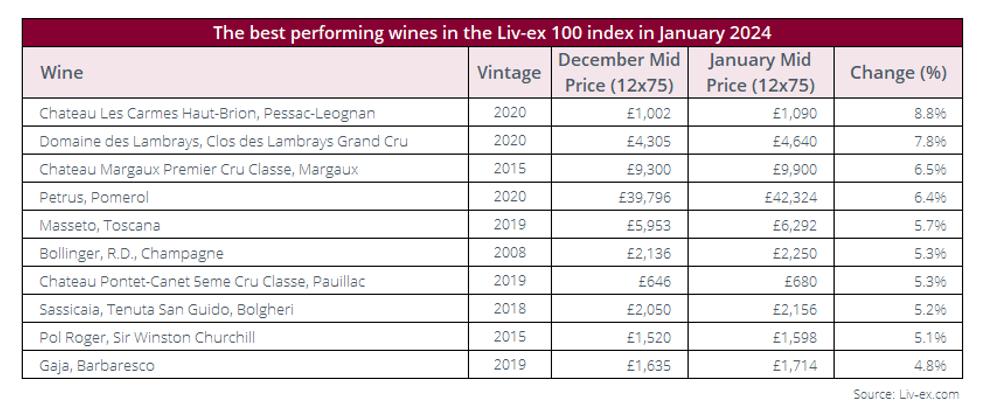There are few documented and transparent resources on fine wine investing available in the mainstream to date. Having been an investment professional for over 20 years alongside a fine wine investor and portfolio manager in the past too, I am looking to change that. This article is going to begin to answer questions around how transparent the fine wine investment world really is for the average person in society. Answering hard hitting questions from the outset and giving thoughts from key personnel within the industry.
What Is fine wine investing and who is the target audience?
Not an easy question to answer. Therefore, I took to asking three of the largest fine wine orientated firms domiciled in the UK to give me their thoughts on fine wine investing and the typical end user.

Tom Gearing founder of Cult Wines
Tom Gearing, chief executive and founder of Cult Wines with £275 million AUM across 83 countries, says: “Fine wine investing is not for everyone and I’m not sure as an industry anyone can claim they have a product ideally set up for retail investors right now. Building a fine wine portfolio is for those who are looking to diversify their wealth and starting at £25,000-£50,000.”
He adds: “It is also the most accessible market for luxury goods items, if we compare it to the likes of fine art, classic cars etc. That’s not to say you can’t invest in fine wine at lower levels, but if you are looking to have a sophisticated, constructed portfolio for investments and to give you a risk adjusted return that does require a certain level of capital.’
Jamie Shakeshaft, sales director of Vin-X Fine Wine Investment, admits “we have a slightly different answer to the question than most”. He explains: “Our target audience is anybody that is looking to benefit from the best possible techniques to see a return on your savings. It is a myth you have to have hundreds of pounds in the bank to invest into fine wine."
Callum Woodcock, chief executive of WineFi, that has developed a fintech wine app orientated approach to investing tends to be in the latter camp too: “We curate portfolios of fine wine that we arrange for our clients from source to sale. Partnering with B2B and B2C businesses, from investors wanting to invest £50 to £100 to private wealth managers looking to invest £10 million’.
However, what cannot be underlined enough, isall three of these top firms underwrite all their experience in fine wine with wine knowledge (WineFi has two MWs on its investment committee), data driven technology, authenticity and customer service. Something which in days gone by, would have been substantially lacking.
Gearing goes onto mention that Cult originated from them capitalising on “a real gap in the market where the average person who has some disposal income and is looking to diversify their portfolio and wants to look at fine wine as an asset class, by being given a full management service”.
Why do investors diversify into fine wine?
As an investor, one of the great benefits for diversifying into fine wine has been that historically it has not been an asset that has been directly correlated to recessions or particular slumps in business cycles. Therefore it has held its inherent value when other parts of your portfolio such as equities and property may fall. Fine wine is a demand and supply orientated market. The top vineyards in the world can only produce so much wine each year and by owning one of those bottles, over time the view is that the value of that wine will go up as the amount of bottles diminishes from highly regarded wineries.
Is there enough transparency and regulation in fine wine?
A real potential barrier to entry for many in the past and one which has in years gone by, been riddled by fraudulent claims of ill treatment and poor client handling from firms – transparency has been at the core of many unwilling to venture into the asset class. Firms now though are conscious of their obligations to clients and place this at the forefront of their management of their business.
Shakeshaft and Woodcock agree, there has been a lack of managed service for clients. Shakeshaft goes further: "Transparency should not be shied away from and it is a large reason why every client at Vin-X has a portfolio manager regardless of portfolio size. Trust and transparency are key in our industry.”

James Miles, co-founder of Liv-ex, which has had a major impact on professionalising fine wine investment and making it more transparent
Aiding - and arguably leading - that transparency is the establishment of Liv-ex (London International Vintners Exchange), created in 2000 by two stockbrokers- James Miles and Justin Gibbs - with the vision of making the fine wine world more transparent, efficient and safe.
Fast forward to now, and Liv-ex has grown to over 620 wine businesses across 47 countries worldwide and claims to have “the most comprehensive database of real-time transaction prices and exclusive market data and insights” (Liv-ex.com 18/03/24).
As James Miles, Liv-ex chairman and managing director, says: ‘Liv-ex is no different from any other exchange. It provides an independent meeting place where its members – bound by a common profession – can come together to find out what is happening in their market and identify opportunities for profit.”
Further transparency via, authentications, storage, insurance, transportation and bond certifications are all employed by fine wine investment houses to the highest degree to ensure the validity and ownership of the investment for the individual or corporate purchasing the asset.
Some of them even offer visits to the storage in bond sites, so that you can see and hold your investment should you wish, such as at Vin-X, where they regularly offer customers visits to their LCB storage facility.
Gearing says what the fine wine investment sector needs to do more collectively is to attract wider institutional investment. He claims: “Whereas we have gone from a hobbyist investment market place to a widely accepted asset class for private wealth it has been a blocker for more sophisticated institutional investment.”
One other headwind to fine wine investing and indeed one of the reasons it is not incorporated in many financial advisor conversations with individuals is because fine wine is an unregulated market.
Woodcock, Shakeshaft and Gearing were all in agreement that regulation would be very difficult to accomplish especially given the Brexit outcome and then also factoring in where that regulation in the industry would sit.
Would that be standardised of regulation at a service provider level, which brings up the complications whereby these are facilitators of storing, insuring and holding their clients wines but the end client owns the wine ultimately.
Is it to standardise terms for insurance and storage? Would there be different regulation for clients buying for consumption or part consumption versus holding to invest? Which jurisdiction does it come under if an investor is based in a different country or region in the world?
A market with a large amount of optionality rolled into it would be ultimately very difficult to regulate, but transparency is certainly key.
What are the biggest pitfalls and misconceptions of the industry?
One of the biggest misconceptions I have found with fine wine investing is that investors see this as a win-win scenario. If the price or value in the fine wine invested in goes up then it is a great investment, but alternatively it is great to drink if it goes down. This is not an investment profile that you would use for other asset classes, and fine wine should be no different. Separate your drinking wine and enjoyment and your fine wine investing wine.

Vin-X Fine Wine Invesment's James Shakeshaft says more "guidance" is needed in the fine wine market
Shakeshaft puts it best when he says that “short term holds and lack of appropriate guidance” are key pitfalls within the fine wine industry. “Ultimately, if you have a diverse portfolio, hold the biggest names in the fine wine market and hold these wines for an appropriate amount of time (three to five years as an absolute minimum), you’re far more likely to have success when investing.”
This sentiment is echoed by the industry. Fine wine is ultimately a demand and supply based business. There is only so much wine that can be produced by the lead fine wine producers across the globe and over time, the number of bottles diminishes potentially offering more value to those that remain in circulation and transported, stored, insured and authenticated appropriately.
It is also a medium to long term investment profile. Fine wine is not a stock market that will rally or fall severely over a short space of time, but is seen by many as almost a second pension profile with some potential capital gains tax exemptions in the UK too depending on individual investor circumstances.
Where is the growth and opportunities in fine wine investment?

The Liv-ex Top 100 index has become an invaluable tool for fine wine merchants and investments to see how individual wines and producers are doing
The Liv-Ex Fine Wine 1000 is the broadest measure of the fine wine market, representing the price movement of 1,000 global fine wines traded on the Liv-ex marketplace. Year-on-year the index was down -13.6% (Jan 15, 2024 Liv-ex.com) a big fall for the asset class, despite over the 20 years since inception, it having risen 314.6%.
Many that are already invested or interested in the market have suggested that fine wine may have had itsboom years. However, all three pointed out this is a business cycle and we are referencing a luxury asset that has increasing global interest, demand and focus over a medium term outlook but is suffering from wider factors.
Gearing adds: “At Cult we have done some analysis on downturns within the fine wine market, typically the downturns last between six to 18 months and we are currently in month nine of this current downturn. We are not out of the woods yet, but seeing the result of a macro economic environment with higher interest rates.’
Shakeshaft adds: “The recently released 2024 Knight Frank Wealth Report continues to paint fine wine as an important asset class for those looking at investing in luxury assets. Fine wine has exhibited remarkable performance compared to other asset classes over the last decade, showcasing its resilience and potential as a stable investment, despite the odd period of ‘correction’ as we are currently seeing. Other classes, such as gold, oil and markets are much more volatile, with large gains followed by significant losses.’
In terms of growth sectors they all have positive mentalities from Italy where the Italian market appears to be seeing good growth and Champagne as an opportunistic entry point given the weakness over the last 12 months, to the Indian investor market which is a larger macro story of wealth development.
Conclusion – tears or bubbles for the future?
What has definitely transpired from this is that if you are an investor who is looking at diversifying your portfolio in an alternative asset, then fine wine should be on your radar. It might not be the right entry point for new money just yet as the downward cycle is expected to continue for the next few months, but with global interest rates most likely at their peak and only likely to fall in the coming months, fine wine could well be that medium term asset of choice for many as they look to maximise their possible returns.
* Andrew Lofthouse also runs his own wine blog and consultancy service www.TheNorthernWineGuy.co.uk.
































